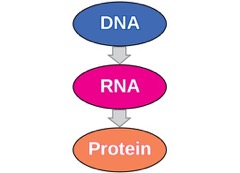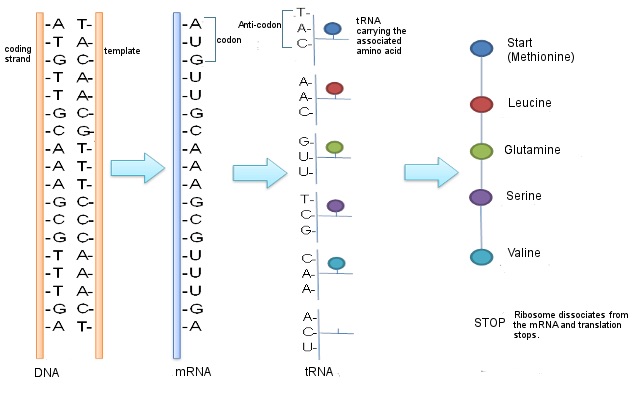16 How do genes direct the production of proteins?
The information to make proteins is stored in an organism’s DNA. Each protein is coded for by a specific section of DNA called a gene. A gene is the section of DNA required to produce one protein. Genes are typically hundreds or thousands of base pairs in length because they code for proteins made of hundreds or thousands of amino acids.
Most genes contain the information needed to make functional molecules called proteins. A few genes produce other molecules that help the cell assemble proteins. The journey from gene to protein is complex and tightly controlled within each cell. It consists of two major steps: transcription and translation. Together, transcription and translation are known as gene expression.
During the process of transcription, the information stored in a gene’s DNA is transferred to a similar molecule called RNA (ribonucleic acid) in the cell nucleus. Both RNA and DNA are made up of a chain of nucleotide bases, but they have slightly different chemical properties. The type of RNA that contains the information for making a protein is called messenger RNA (mRNA) because it carries the information, or message, from the DNA out of the nucleus into the cytoplasm.
Translation, the second step in getting from a gene to a protein, takes place in the cytoplasm. The mRNA interacts with a specialized complex called a ribosome, which “reads” the sequence of mRNA bases. Each sequence of three bases, called a codon, usually codes for one particular amino acid. Remember that amino acids are the building blocks of proteins. A type of RNA called transfer RNA (tRNA) assembles the protein, one amino acid at a time. Protein assembly continues until the ribosome encounters a “stop” codon (a sequence of three bases that does not code for an amino acid).

The flow of information from DNA to RNA to proteins is one of the fundamental principles of molecular biology. It is so important that it is sometimes called the “central dogma.”

References
Unless otherwise noted, images on this page are licensed under CC-BY 4.0 by OpenStax.
“What are proteins and what do they do?” by U.S. National Library of Medicine is in the Public Domain


Feedback/Errata